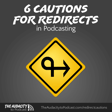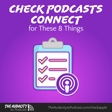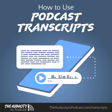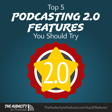
Best Podcasting Microphones in 2023
“Which podcasting mic should I buy?” is one of the most common questions I see from people starting their first podcast. It is a good question. And while there can be many answers, especially depending on your needs, here are what I think are the best podcasting microphones.
Disclosure
This post may contain links to products or services with which I have an affiliate relationship. I may receive compensation from your actions through such links. However, I don't let that corrupt my perspective and I don't recommend only affiliates.
Hear this episode with different mics
I recorded this episode with all of the following mics, all with the same settings, and processed the same except for any amplification difference necessary to reach my target of -19 LUFS. The main podcast release of this episode switches between mics for each section, but you can each the entire episode from each mic below.
iPhone 12 Pro:
Audio-Technica ATR2100x-USB via XLR:
Shure MV7 via XLR:
Shure SM7B:
Electro-Voice RE320:
4. Any mic when used properly and effectively
The Blue Yeti gets a lot of hate from experienced and professional podcasters. Why? Because it's the most overpriced, overhyped, oversized, confused, misused, and abused microphone in podcasting—that's all!
But you can actually get great audio from Blue Yeti!
You can also get good audio from earbuds, your smartphone's built-in mic, and even the internal mic on your laptop.
It's all in how you use the microphone and what you expect from it!
I teach that the two most important things to record good audio are environment and technique—actually more important than the microphone itself!
Environment: Microphones aren't magical. If you're in a noisy or reverb-heavy environment, you will get noisy and reverb-heavy audio. A bad mic in a quiet and acoustically treated room will probably always be more listenable than a fancy mic in a noisy echo chamber.
Technique: You can actually mitigate some of the noise and reverb with proper mic technique. This is usually about where you position and point the mic, and where you position and point your voice.
Consider the Blue Yeti, for example. Point the front (not the top) toward you, switch it to cardioid mode, and keep it close to you (about 4–6 inches or 10–15 cm away) and at a 45º pivot away from the front of your mouth.
Yes, processing algorithms in Auphonic, Descript, Adobe Podcast (



















